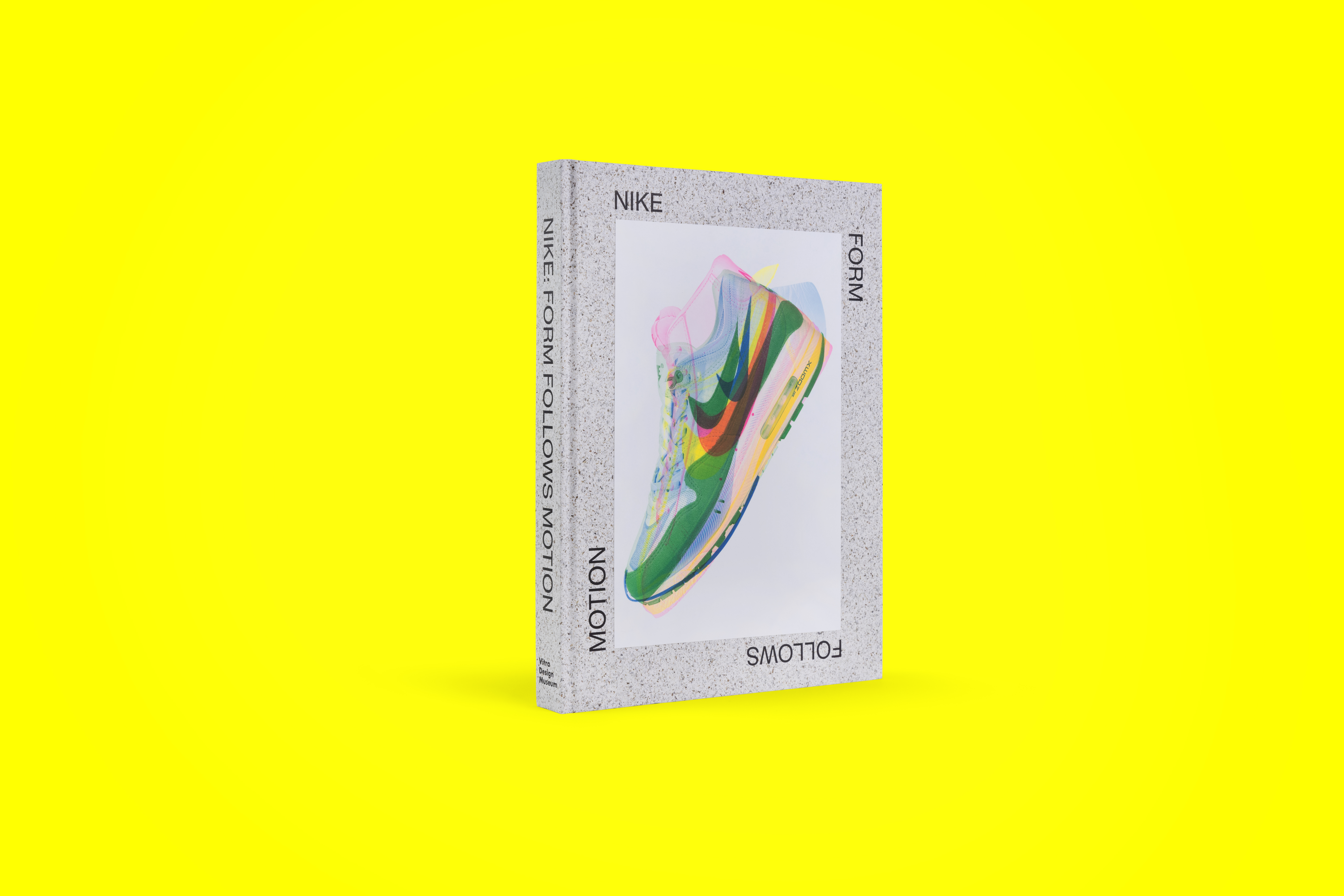In 2024, the Vitra Design Museum in Weil am Rhein unveiled the first-ever comprehensive museum exhibition on Nike — a brand that has shaped global design culture and transformed sportswear into a symbol of innovation, identity, and aspiration. The Nike: Form Follows Motion exhibition presented an unprecedented look into the design history of the world’s largest sports brand. To accompany this landmark exhibition, a richly detailed and exquisitely crafted catalog under the same name was published, offering a deep dive into the company’s evolution, design philosophy, and cultural impact.

From waffle soles to the world stage
Nike’s journey began in the 1960s with the hand-built shoes of co-founder Bill Bowerman, whose kitchen-born waffle sole would become an icon of performance innovation. The exhibition, curated by Glenn Adamson and initiated by museum director Mateo Kries, was organized into four thematic sections: Track, Air, Sensation, and Relation. These chapters trace Nike’s growth from a niche running shoe company to a global design powerhouse whose products and aesthetics have shaped not only how we move, but how we see ourselves.
Through rare prototypes, original sketches, vintage advertising, and immersive reconstructions of Nike’s design labs, the exhibition revealed how Nike designs with athletes — not just for them. It also shows how its innovations, such as the Air sole, Flyknit, and its Move to Zero sustainability initiative, reflect larger cultural shifts around the body, identity, and the environment.
The exhibition, curated by Glenn Adamson and initiated by museum director Mateo Kries, was organized into four thematic sections: Track, Air, Sensation, and Relation. These chapters trace Nike’s growth from a niche running shoe company to a global design powerhouse whose products and aesthetics have shaped not only how we move, but how we see ourselves.
Mateo Kries, Director of the Vitra Design Museum, explains the origins of the exhibition as follows: “We’ve long wanted to mount an exhibition about design and sport. When we began conversations with Nike, we discovered their incredible design archive – a treasure trove never before presented in an exhibition. That sparked the idea. This exhibition offers a unique opportunity to explore the intersection of design and sport through the lens of a single brand, drawing on a rich collection of never-before-seen objects.” While Glenn Adamson, the exhibition’s curator, expands on this vision: “Beyond the development of iconic products, we’re also exploring the social and historical context around Nike. In the past 50 years, sport has had a massive influence on how we perceive our bodies – not just on the track or field, but also in shaping gender roles. Our exhibition shows how Nike helped drive this transformation and evolved from a performance-oriented company to one embracing diversity and inclusion. Examining Nike’s design culture gives us insight into a broader social narrative.”
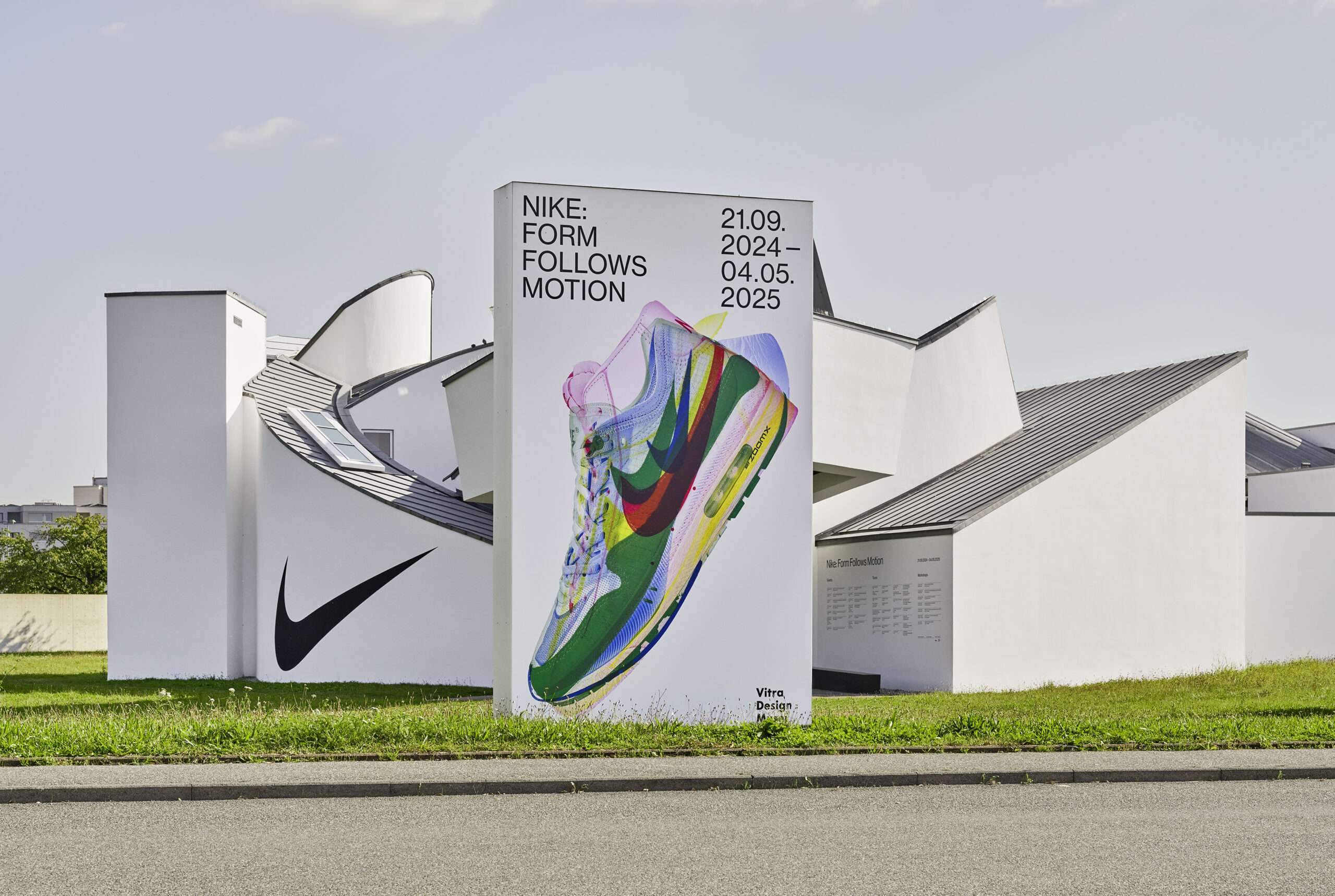
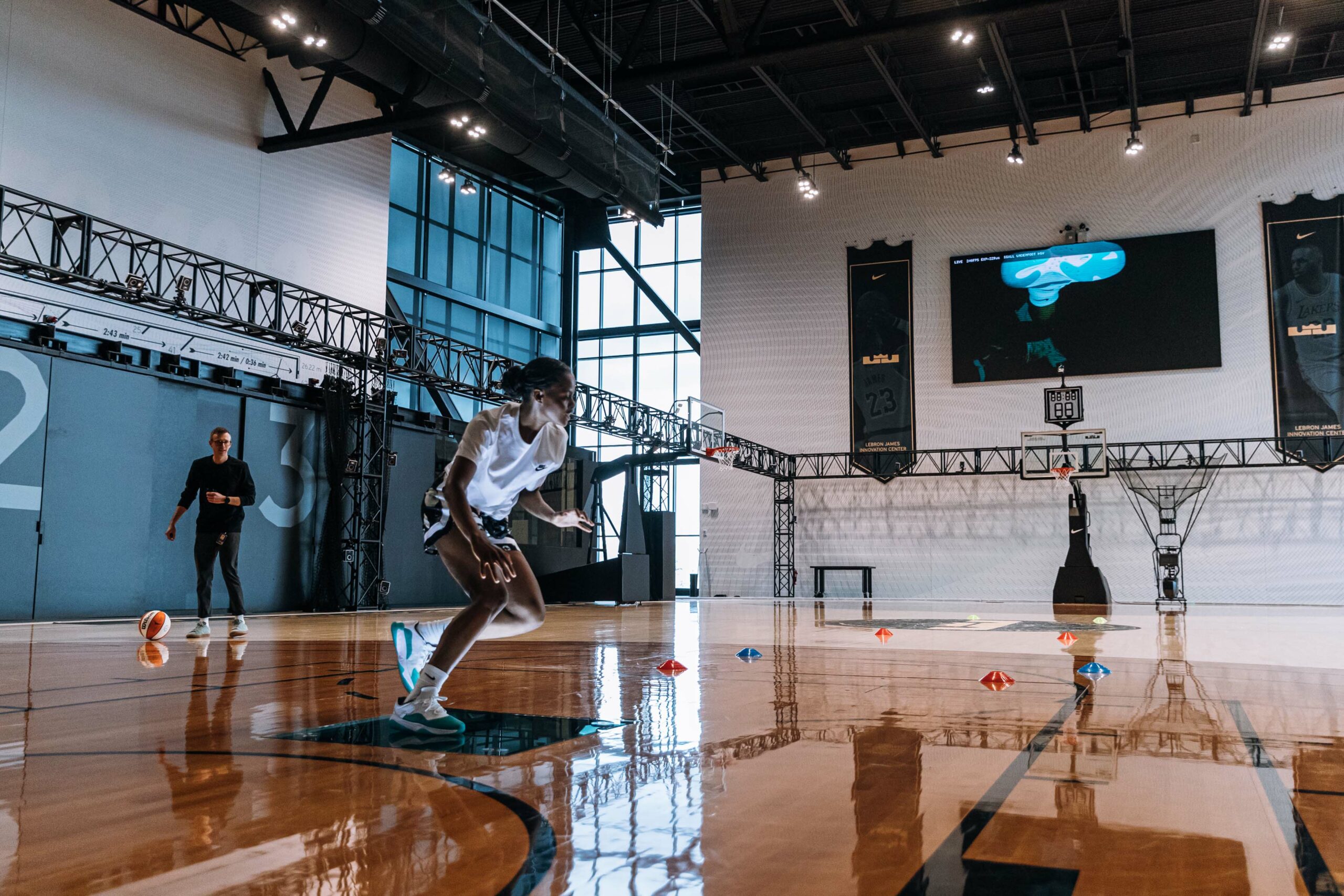
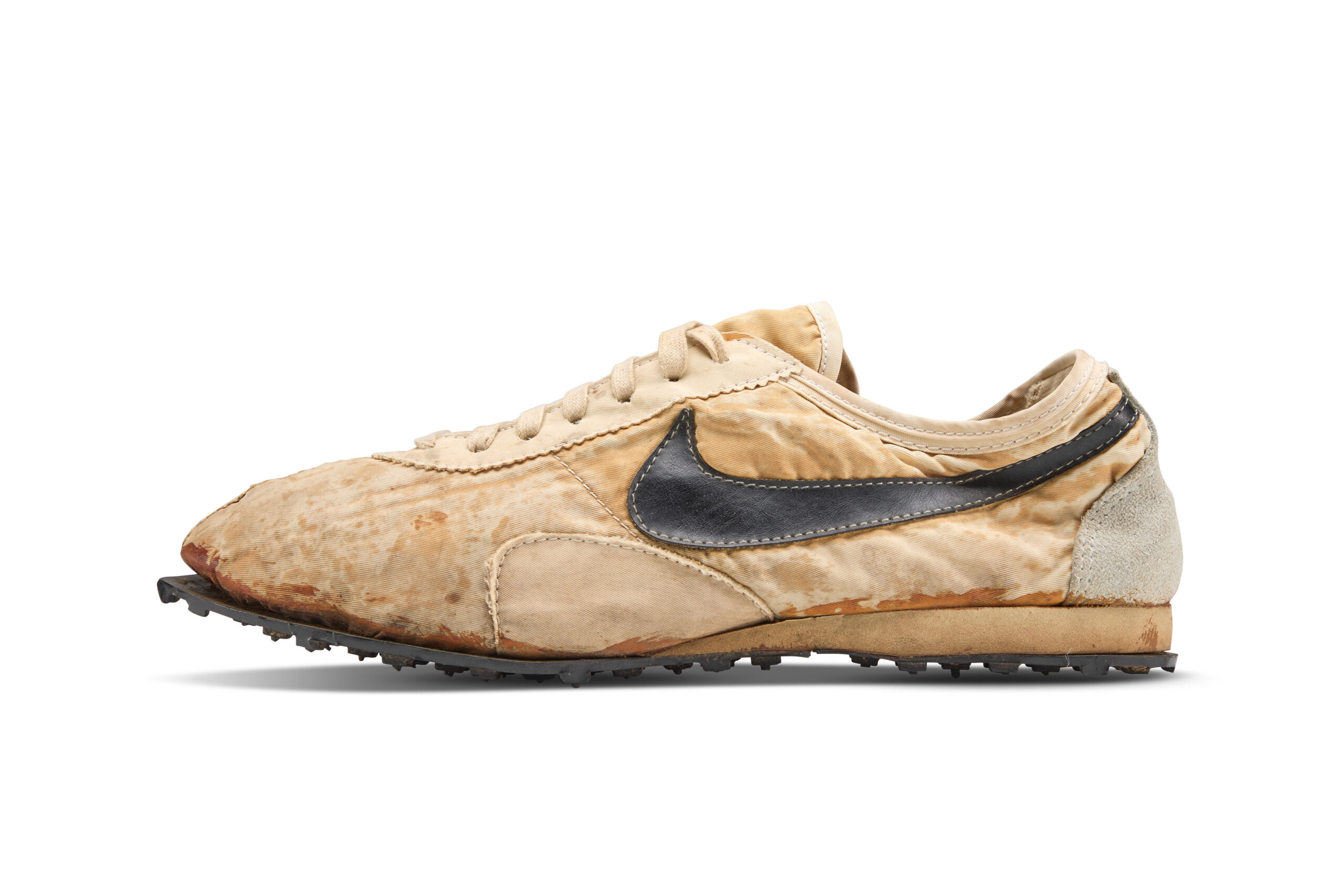
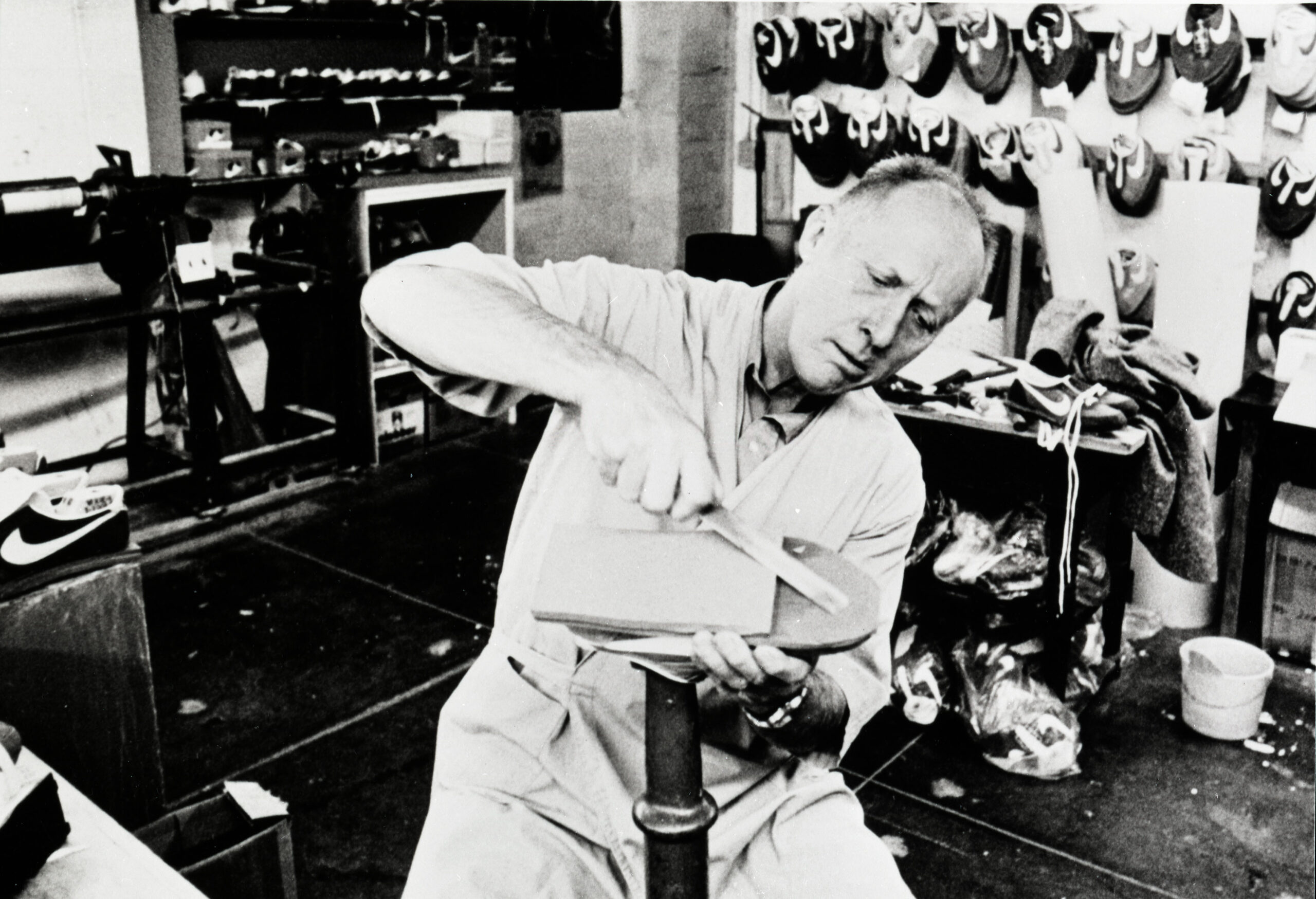
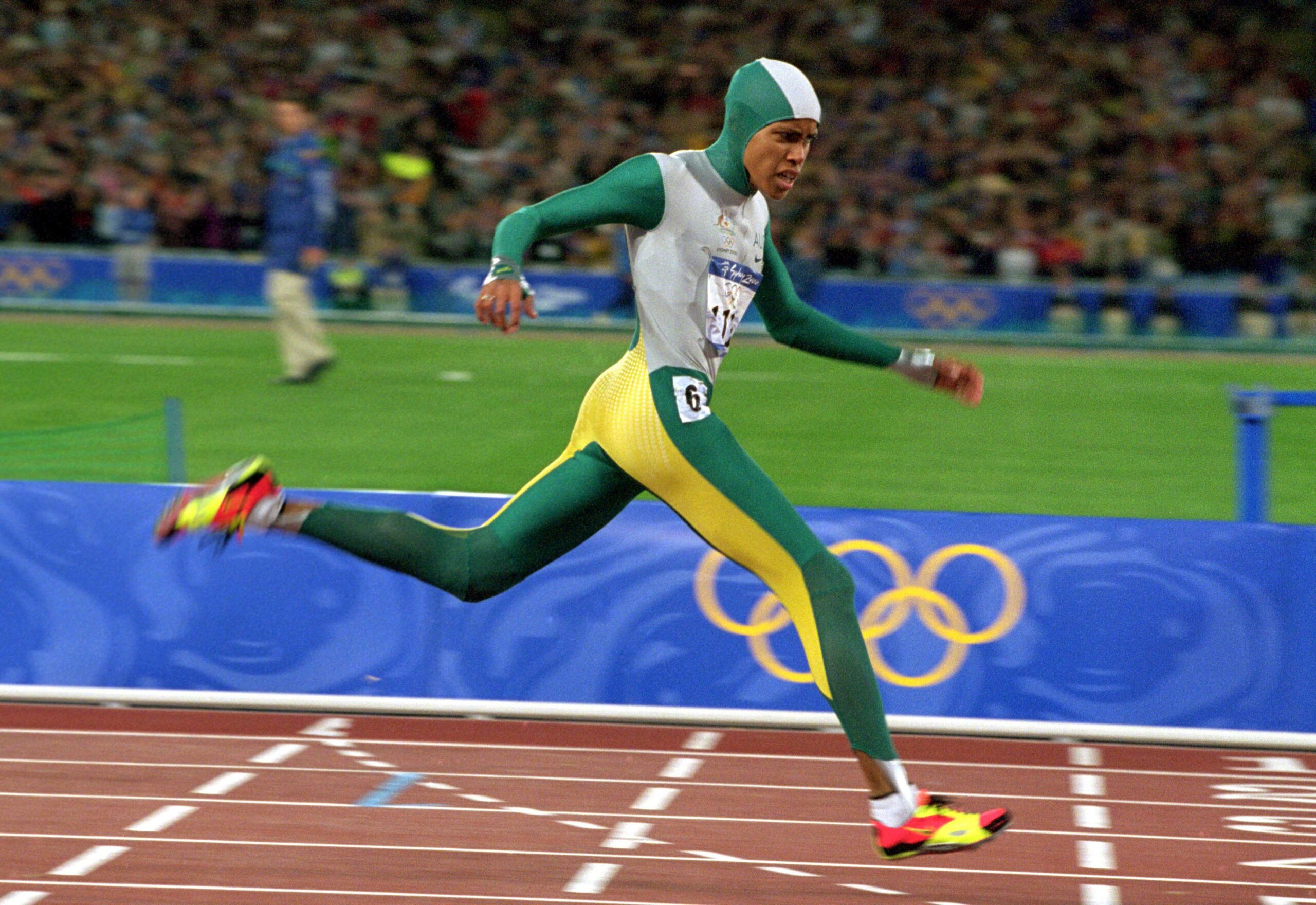


An exhibition catalog that reflects the culture of design at Nike
The Nike: Form Follows Motion catalog is much more than a printed guide as it was designed to complement the scope and depth of the exhibition — becoming a collectible for book enthusiasts, and tactile exploration of Nike’s design universe. The catalogue was edited by Mateo Kries and Glenn Adamson, and designed by Daniel Streat of the studio Visual Fields. With 356 pages printed in Germany, the book uses offset printing with CMYK plus five spot colors, enhancing the vibrancy and depth of its visuals. The interior pages are printed on Munken Lynx 120 g/m², a premium uncoated design paper known for its excellent readability and subtle texture.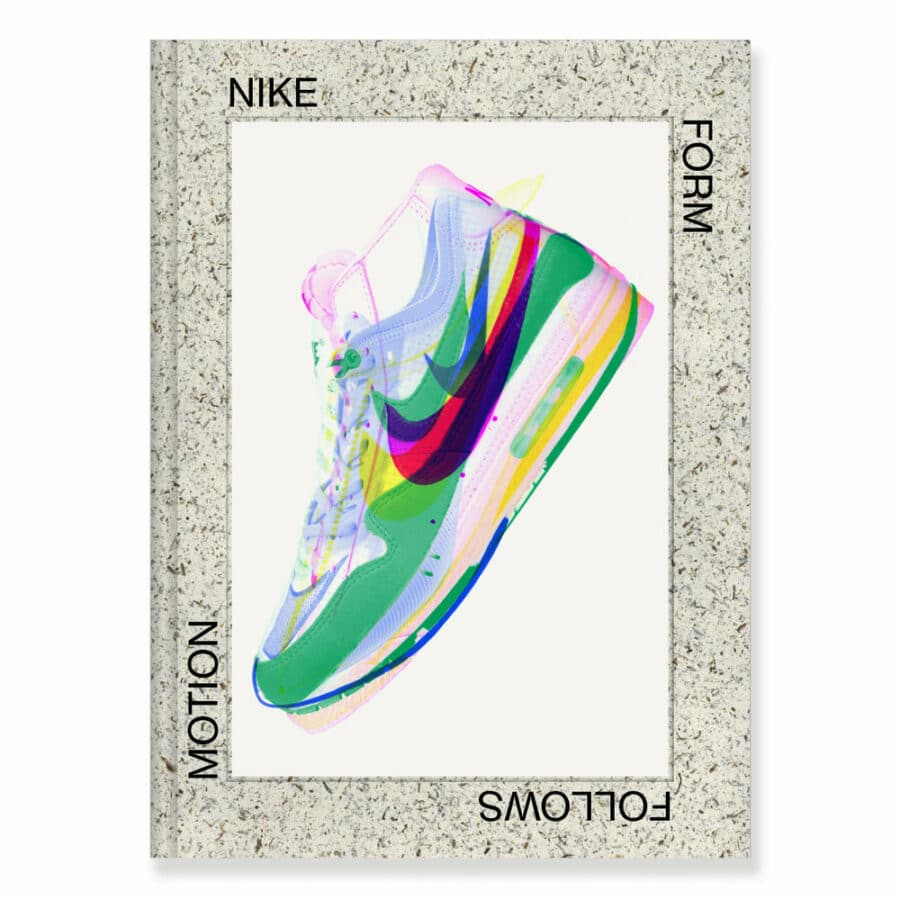
The most striking feature of the book is its cover, made from recycled seaweed by the sustainable materials company Notpla. Each cover is unique, giving every copy a distinct tactile and visual identity. The cover image, created by Streat, overlays four Nike shoes from different eras — a symbolic representation of the book’s and exhibition’s four-part structure. It’s both a metaphor for movement through time and a visual excavation of Nike’s design DNA.
The most striking feature of the book is its cover, made from recycled seaweed by the sustainable materials company Notpla. Each cover is unique, giving every copy a distinct tactile and visual identity.
Inside, the book features a range of innovative design elements. Cut-back pages throughout the volume reveal interviews with key figures at Nike headquarters. These features are designed to evoke the experience of walking through Nike’s halls and overhearing conversations — offering the reader an intimate glimpse into the collaborative and iterative design process that fuels Nike’s innovation.
Both the exhibition and the catalog act as a celebration and a revelation — the first full examination of how Nike has reshaped the relationship between sport, body, and design. The catalog, available through Morawa’s online shop, stands as a powerful work of design in its own right. With its sustainable materials, innovative layout, and previously unseen imagery, it captures the essence of Nike’s creative process and cultural impact. For anyone interested in design, sport, fashion, or cultural history, this publication is more than a book — it’s a tactile, visual journey into Nike’s world of innovation and expression.
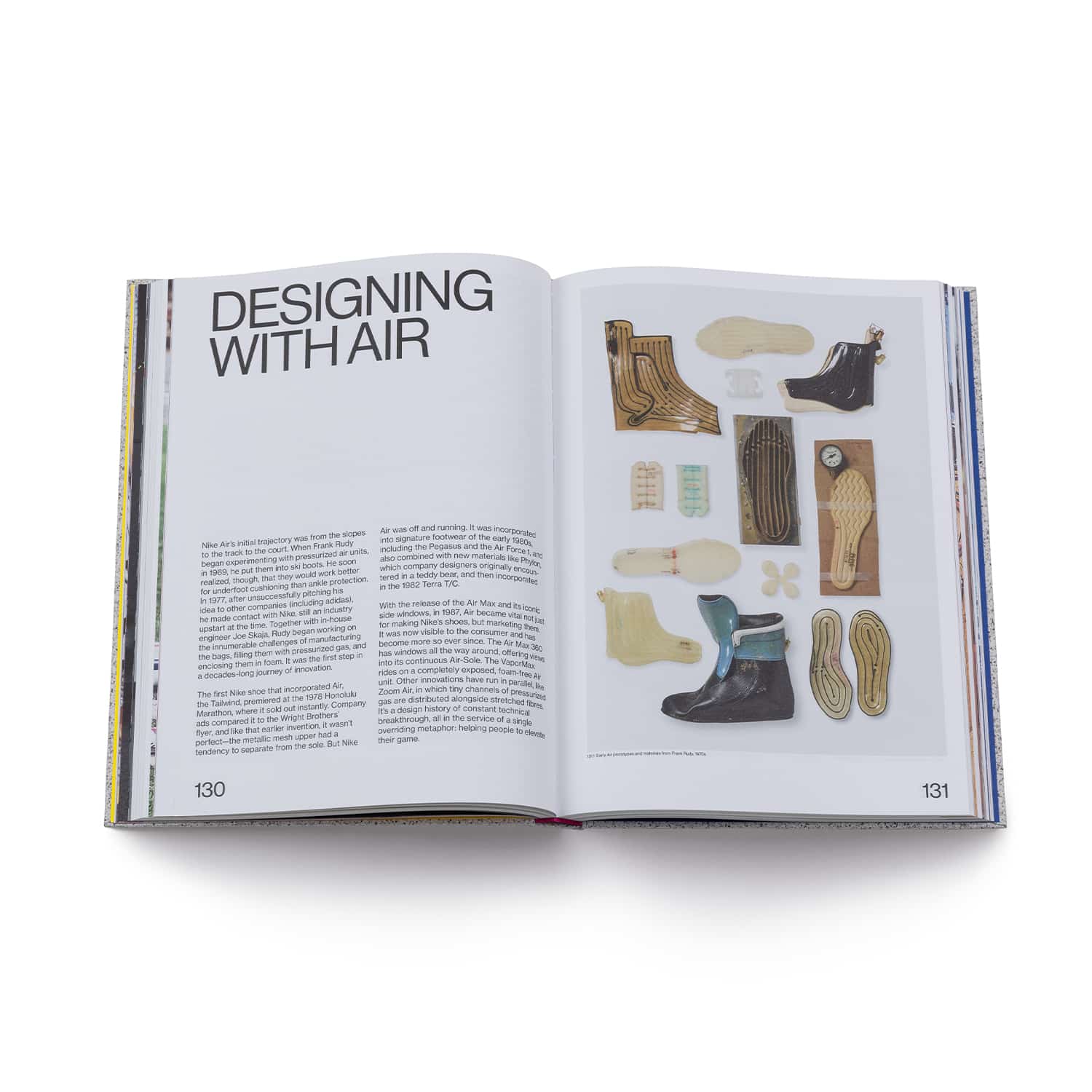
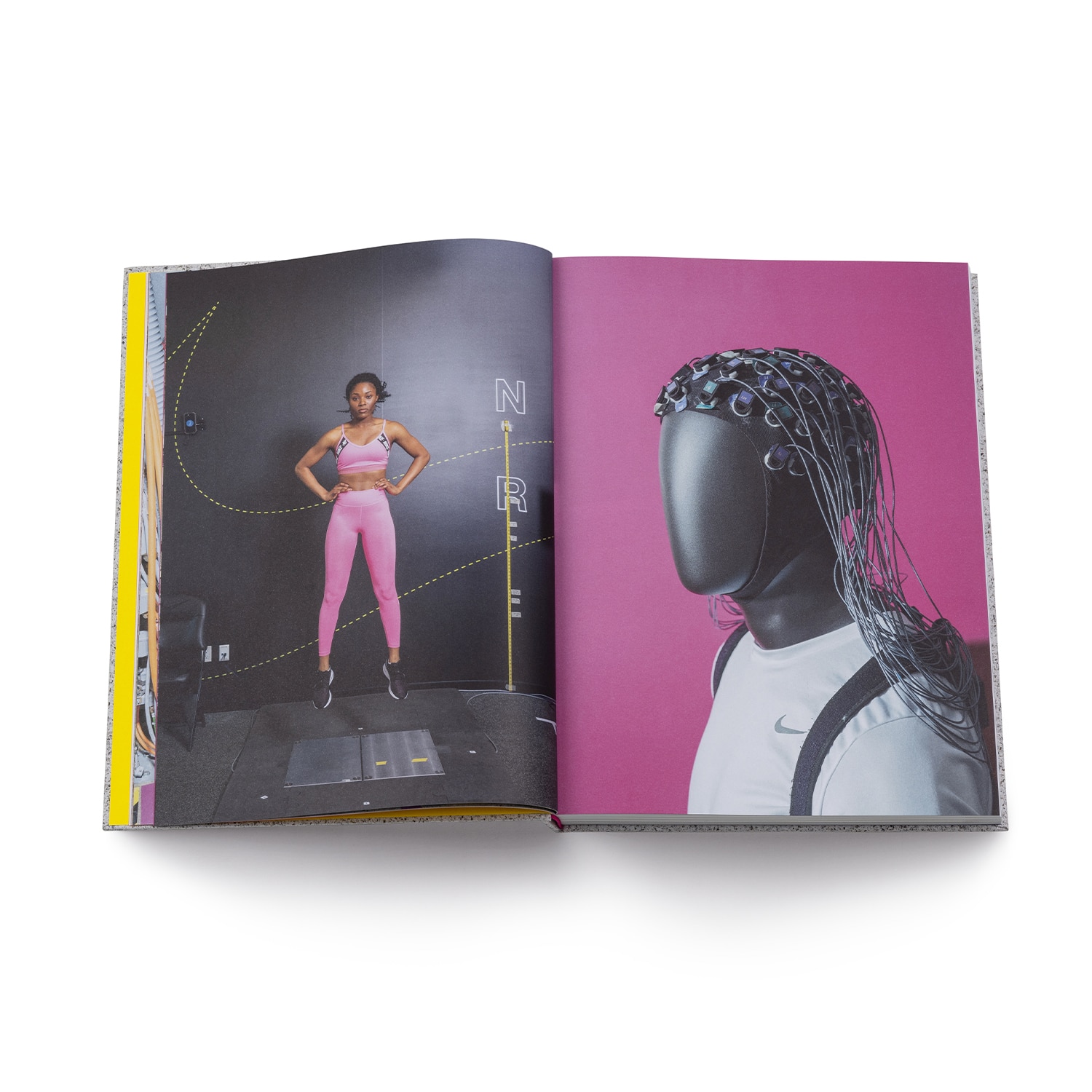
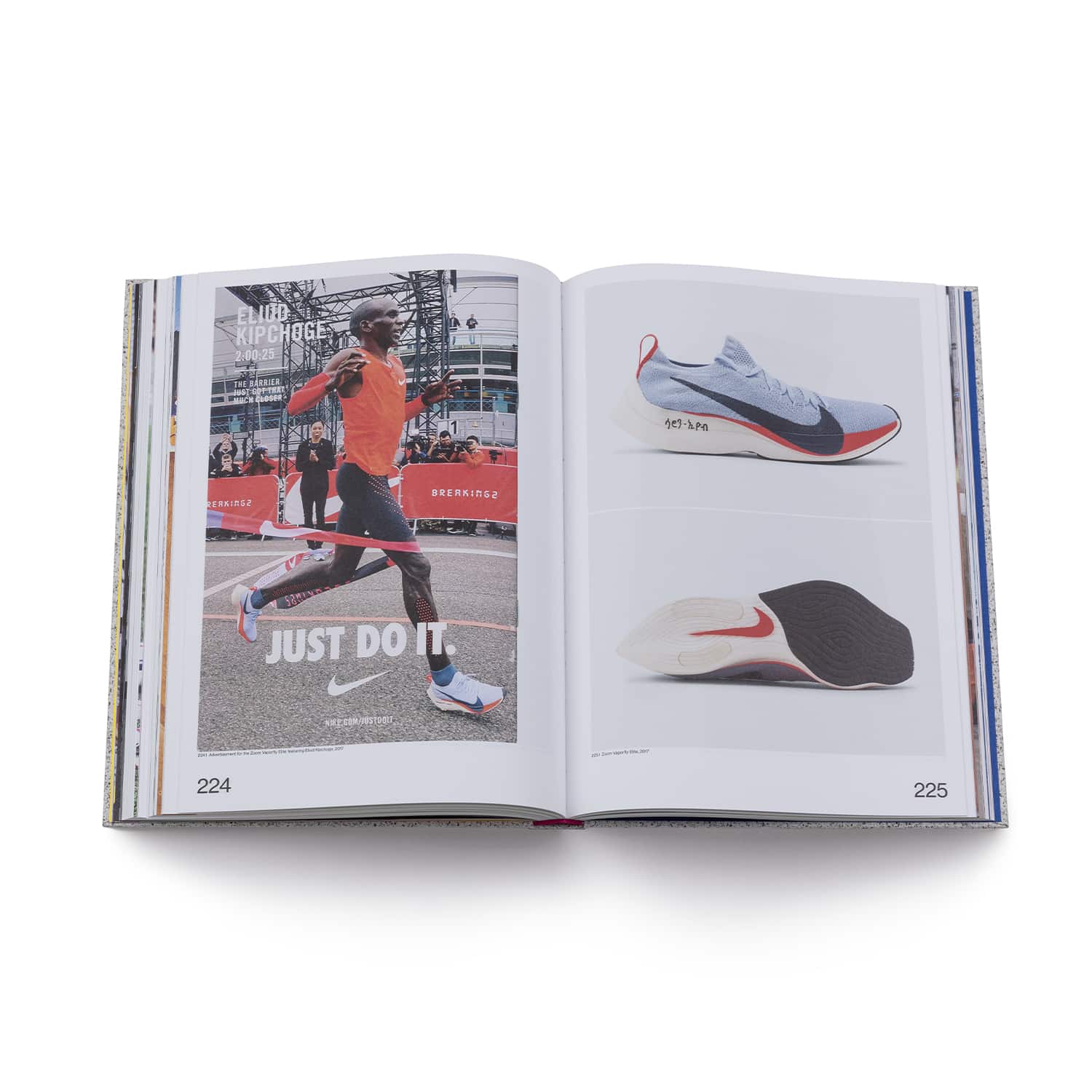
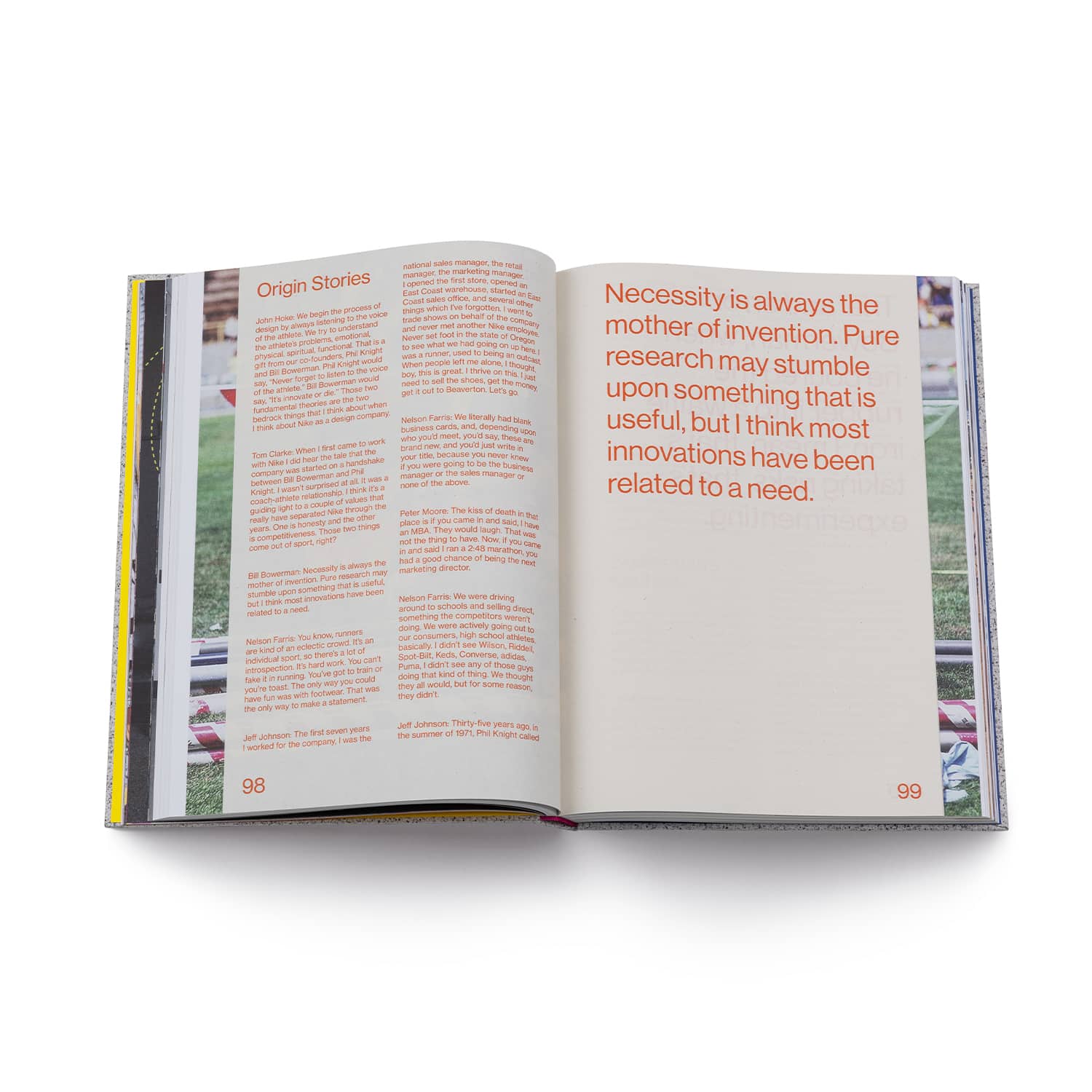
© 2025 Vitra Design Museum / Foto: Dejan Jovanovic

